
- The Architectural Marvel of the Sagrada Familia: A Brief Overview
- Key Features of the Sagrada Familia: What Makes It Unique?
- Timeline of Construction: Sagrada Familia Completion Expected by 2026
- The Vision Behind Gaudí's Design for the Sagrada Familia
- Cultural Significance of the Sagrada Familia in Barcelona
- What to Expect When Visiting the Sagrada Familia in 2026
The Sagrada Familia, an iconic basilica designed by architect Antoni Gaudí, has been a symbol of Barcelona since its construction began in 1882. This masterpiece of modernist architecture attracts millions of visitors each year, captivating them with its intricate facades and stunning interior details.
With ambitious plans in place, the construction of the Sagrada Familia in Barcelona to be completed by 2026 marks a significant milestone in the project's long history. As the completion date approaches, the anticipation grows, promising a grand finale to Gaudí's extraordinary vision and a renewed cultural landmark for future generations.
The Architectural Marvel of the Sagrada Familia: A Brief Overview
The Sagrada Familia stands as a monumental testament to Antoni Gaudí's visionary approach to architecture. This basilica uniquely blends Gothic and Art Nouveau styles, establishing a narrative through its elaborate sculptures and towering spires. Each element of its design, from the facades to the interiors, reflects Gaudí's deep connection with nature and his innovative use of light and color, creating an immersive spiritual experience for visitors.
One of the defining characteristics of the Sagrada Familia is its structural ingenuity. Gaudí employed a combination of traditional masonry techniques and groundbreaking engineering solutions, resulting in a structure that challenges conventional architectural norms. Key features include:
- Hyperboloid Paraboloids: These unique shapes provide both strength and aesthetic beauty.
- Natural Lighting: The integration of stained glass windows allows soft, colored light to fill the interior, enhancing its ethereal quality.
- Organic Forms: The design mimics natural shapes, promoting harmony between architecture and the environment.
As the completion date of 2026 approaches, the anticipation surrounding the Sagrada Familia intensifies. This architectural marvel not only represents Gaudí's genius but also embodies the cultural aspirations and resilience of Barcelona. The final stages of construction promise to add significant elements to the existing structure, transforming it into a world-renowned symbol of artistic achievement.
To appreciate the full scope of the Sagrada Familia, it is essential to consider its dimensions and iconic features:
| Feature | Details |
|---|---|
| Height | At completion, it will reach 172.5 meters, surpassing the tallest building in Barcelona. |
| Facades | Three main facades: Nativity, Passion, and Glory, each telling a different aspect of Christ's life. |
| Spire Design | A total of 18 spires representing the 12 apostles, the Virgin Mary, the four evangelists, and Jesus Christ. |
Key Features of the Sagrada Familia: What Makes It Unique?
The Sagrada Familia is not only a religious building but also a canvas of artistic expression. One of its most unique features is the intricate sculptural detail found throughout the structure. Gaudí's vision included over 1,000 sculptures that depict various biblical figures and stories, enhancing the narrative of the basilica and creating a visual journey for visitors. Each sculpture is carefully integrated into the architecture, making the entire structure a cohesive work of art.
Another remarkable aspect is the use of geometry and symmetry in the design. Gaudí incorporated natural forms and mathematical principles, such as the Fibonacci sequence, to create harmonious proportions. This meticulous attention to detail not only contributes to the beauty of the Sagrada Familia but also ensures stability and resilience, allowing it to withstand the test of time.
Furthermore, the basilica's innovative use of light enhances its spiritual ambiance. The stained glass windows, crafted in vibrant colors, create a dynamic interplay of light and shadow within the interior space. As the sun moves throughout the day, the light transforms, filling the basilica with a warm glow that changes the visitor's experience, emphasizing the connection between the divine and the natural world.
Lastly, the Sagrada Familia's inspirational vision extends beyond architecture; it embodies a commitment to ongoing cultural heritage. The project continues to unite artists, architects, and craftsmen from around the world, each contributing their skills to realize Gaudí's dream. As completion approaches in 2026, the Sagrada Familia stands as a testament to human creativity and dedication, inspiring future generations.
Timeline of Construction: Sagrada Familia Completion Expected by 2026
The construction timeline of the Sagrada Familia has been a remarkable journey spanning over a century. Initially commenced in 1882, the project has experienced various phases, each marking significant architectural milestones. The anticipated completion by 2026 is set to coincide with the centenary of Gaudí's passing, symbolizing a profound tribute to his vision.
Throughout its construction, several phases have defined the development of the basilica. Key milestones include:
- 1882: Groundbreaking and initial design by Francisco de Paula del Villar.
- 1883: Antoni Gaudí takes over as the chief architect, implementing his unique design principles.
- 1936: The Spanish Civil War interrupts construction, leading to significant setbacks.
- 2010: The basilica is consecrated by Pope Benedict XVI, marking a significant spiritual milestone.
- 2026: Expected completion, bringing Gaudí's vision closer to fruition.
As the completion date approaches, the integration of advanced technology alongside traditional craftsmanship is pivotal. Innovations in construction techniques have accelerated the process, allowing for the execution of complex designs while maintaining Gaudí's original intent. The ongoing work further emphasizes the importance of collaboration among contemporary architects and artisans dedicated to realizing this architectural dream.
In conclusion, the timeline of the Sagrada Familia's construction reflects not only the evolution of architecture but also the resilience of human spirit. The final stages promise to enhance its status as a world-renowned symbol of artistic achievement, ensuring that future generations will continue to marvel at this extraordinary basilica.
The Vision Behind Gaudí's Design for the Sagrada Familia
Antoni Gaudí's vision for the Sagrada Familia is rooted in a deep spiritual philosophy that seeks to connect the divine with nature. Gaudí believed that architecture should reflect the natural world, and he meticulously designed each aspect of the basilica to embody this principle. His use of organic forms and intricate details not only conveys beauty but also symbolizes the presence of God in every element of creation.
At the heart of Gaudí's design lies a profound understanding of light and its transformative power. He envisioned stained glass windows that would flood the interior with colorful light, creating a dynamic atmosphere that shifts throughout the day. This interplay of light enhances the spiritual experience of visitors, inviting them to reflect on their own connection to the divine. The intended effect is a sacred space that feels alive, echoing the vibrancy of nature itself.
Gaudí's architectural approach also involved the integration of symbolic elements that narrate the story of Christ. Each facade—the Nativity, Passion, and Glory—tells a different chapter of the Christian narrative, inviting contemplation and deeper understanding. This intentional storytelling through architecture serves to engage visitors and imbue the Sagrada Familia with a sense of purpose beyond its physical structure.
Ultimately, Gaudí's vision for the Sagrada Familia extends beyond mere aesthetics; it is a testament to his belief in the harmony between humanity, nature, and the divine. As we approach the anticipated completion in 2026, this masterpiece stands as a symbol of hope and inspiration, reflecting Gaudí's enduring legacy and his dream of a sacred space that resonates with all who enter.
Cultural Significance of the Sagrada Familia in Barcelona
The Sagrada Familia holds immense cultural significance as a symbol of Barcelona's identity and artistic heritage. More than just a religious structure, it represents the city’s dedication to innovation and creativity. Gaudí's design philosophy transcends typical architectural boundaries, embodying a vision that intertwines spirituality with nature, making it a beacon of inspiration for artists and architects worldwide.
Furthermore, the Sagrada Familia serves as a cultural hub by attracting millions of visitors annually, contributing significantly to Barcelona's economy and cultural landscape. Its presence fosters a sense of community among locals and tourists alike, sparking conversations about art, faith, and history. The ongoing construction also provides a platform for cultural exchange, as craftsmen and artists from different backgrounds collaborate to bring Gaudí's vision to life.
Additionally, the basilica stands as a testament to resilience and hope, symbolizing the enduring spirit of Barcelona. Despite numerous challenges over the years, including interruptions due to war and economic difficulties, the project has persisted, reflecting the determination of the people to see Gaudí's dream realized. This unwavering commitment enhances its status as a cultural landmark, inspiring future generations to appreciate the interplay of art and architecture.
In conclusion, the Sagrada Familia is not only an architectural marvel but also a symbol of human creativity and collective aspiration. As its completion approaches in 2026, it reinforces the notion that art can unite people, transcend time, and create a legacy that resonates through history. This basilica invites ongoing dialogue about artistic vision, spirituality, and the importance of cultural preservation.
What to Expect When Visiting the Sagrada Familia in 2026
Visiting the Sagrada Familia in 2026 will offer a unique experience as the construction nears completion. Expect to witness the culmination of over a century of artistic and architectural endeavors, bringing Gaudí’s visionary ideas to life. The basilica will feature enhanced elements that reflect both historical significance and modern innovations, enticing visitors with its breathtaking beauty and intricate details.
As you explore the Sagrada Familia, look forward to:
- The Grand Opening: A celebration of the final touches will mark this historic moment, drawing attention from around the globe.
- Newly Completed Facades: The Glory facade will be completed, providing a breathtaking narrative of the life of Christ.
- Expanded Visitor Facilities: Enhanced amenities will ensure a more comfortable and engaging experience for everyone.
The interior, already renowned for its play of light and color, will further come alive with the installation of additional stained glass windows. This will amplify the spiritual atmosphere, inviting visitors to immerse themselves in a serene and contemplative environment. Additionally, the introduction of guided tours featuring augmented reality technology will enrich the storytelling, allowing guests to explore Gaudí's inspirations and techniques in a captivating manner.
As the Sagrada Familia approaches its anticipated completion, it stands not just as a testament to architectural brilliance but also as a symbol of unity within Barcelona. Visitors in 2026 can expect a space that fosters connection, reflection, and admiration for both the divine and human creativity, leaving a lasting impression long after they depart.
 Acquista i biglietti per la Casa Batlló online o in loco
Acquista i biglietti per la Casa Batlló online o in loco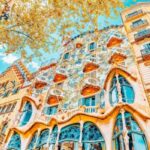 Bilety na Casa Batlló - gdzie kupić?
Bilety na Casa Batlló - gdzie kupić? Unfinished Sagrada Família: Gaudí's Masterpiece
Unfinished Sagrada Família: Gaudí's Masterpiece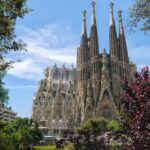 The Enigmatic History of Sagrada Familia in Barcelona
The Enigmatic History of Sagrada Familia in BarcelonaIf you want to know other articles similar to Sagrada Familia in Barcelona to be completed by 2026 you can visit the category Sagrada Familia.
Deja una respuesta

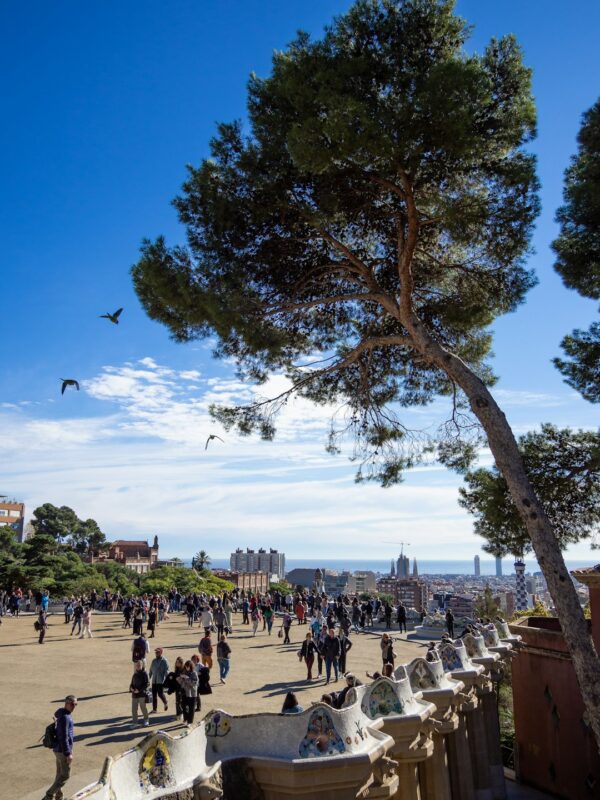
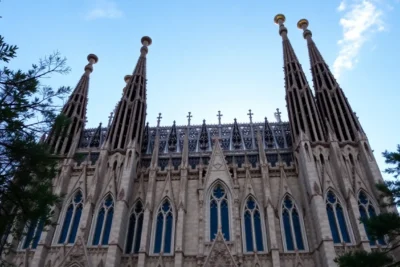
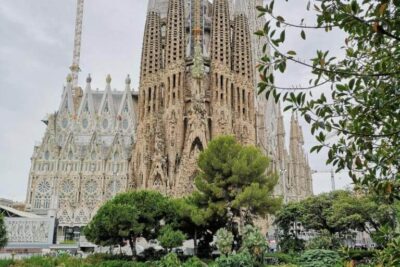
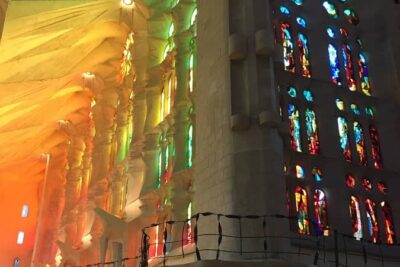
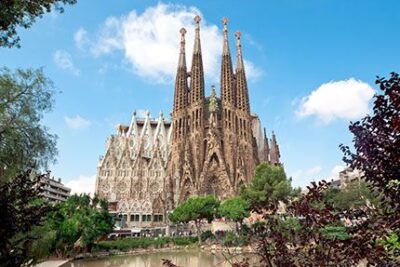
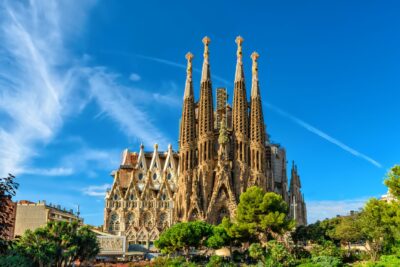
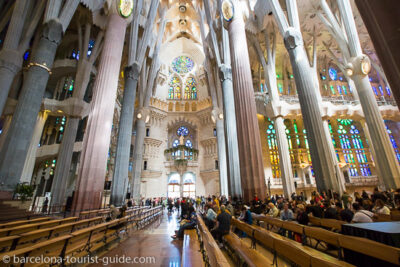
Read more!